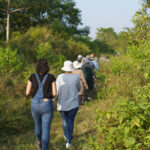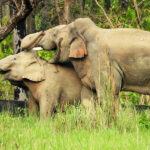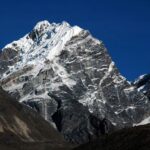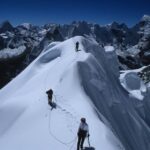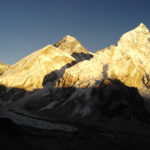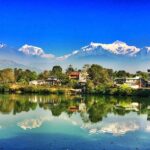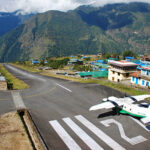
How Fit Do You Need to Be to Trek to Everest Base Camp?
Trekking to Everest Base Camp (EBC) is a dream for many adventure seekers worldwide. Towering at an altitude of 5,364 meters (17,598 feet), the EBC trek offers jaw-dropping Himalayan views, rich Sherpa culture, and the thrill of walking in the footsteps of legendary mountaineers. But one of the most common and important questions people ask is:
“How fit do I need to be to trek to Everest Base Camp?”
This guide provides a comprehensive look at the fitness level, training tips, altitude factors, and mental preparation you’ll need to confidently undertake this iconic Himalayan journey.
1. Is the Everest Base Camp Trek Difficult?
While the Everest Base Camp trek doesn’t require technical climbing skills or mountaineering equipment, it is still considered a moderate to strenuous trek due to the high altitude, long days of walking, and rugged terrain.
You’ll walk an average of 5 to 8 hours a day for 12–14 days, covering approximately 130 kilometers (81 miles) round trip. The trail ascends gradually, but the thinning air above 3,000 meters makes each step more challenging. The trek reaches its highest point at Kala Patthar (5,545 m), which offers panoramic views of Everest.
2. What Type of Fitness is Required?
To complete the Everest Base Camp trek comfortably and safely, you need a good level of cardiovascular fitness, muscular strength, stamina, and mental resilience. Let’s break that down:
Cardiovascular Endurance
Cardio fitness is crucial for sustaining physical effort over long hours. You’ll be trekking uphill and downhill with reduced oxygen levels, so your heart and lungs must be well-trained.
Recommended activities:
-
Hiking, brisk walking, trail running
-
Cycling, swimming, rowing
-
Stair climbing or treadmill with incline
Start with 30–45 minutes of cardio, 4–5 days a week, at least 8–12 weeks before the trek.
Muscular Strength & Endurance
Strong legs and a stable core help you manage uneven trails and steep descents while carrying your daypack. Resistance training helps prevent injuries and fatigue.
Focus areas:
-
Legs: squats, lunges, step-ups
-
Core: planks, mountain climbers
-
Back & shoulders: rows, shoulder presses (for backpack weight)
Include 2–3 strength sessions per week in your routine.
Stamina
EBC is not a sprint—it’s a test of endurance. You’ll need to walk up to 8 hours some days, especially during summit days like the hike to Kala Patthar.
Tip: Do long hikes on weekends, gradually increasing to 6–7 hours per day, wearing a loaded backpack (7–10 kg) to simulate trekking conditions.
3. Do I Need to Be an Athlete?
Absolutely not. Many successful EBC trekkers are normal people in average shape who train properly. You don’t need to be a marathon runner or gym enthusiast. However, showing up without any training or preparation is risky.
People of all ages—including those in their 50s or 60s—have completed the trek. The key is consistent training, mental commitment, and giving your body time to adjust to the altitude.
4. The Challenge of High Altitude
Altitude is the biggest wild card. Even the fittest trekkers can experience Acute Mountain Sickness (AMS) if they ascend too quickly. Symptoms can include headaches, nausea, dizziness, and fatigue.
How to Prepare for Altitude:
-
Trek slowly: Follow the “climb high, sleep low” principle.
-
Hydrate: Drink 3–4 liters of water daily.
-
Rest days: Use acclimatization stops (e.g., Namche Bazaar, Dingboche).
-
Consider Diamox: An altitude medication, after consulting your doctor.
A well-planned itinerary, like those provided by Getaway Nepal Adventure, includes sufficient acclimatization days to reduce the risk of AMS and increase your comfort.
5. Mental Preparation: The Hidden Factor
Physical strength will carry you far, but mental endurance will get you to base camp. The trek can be physically exhausting and mentally draining, especially on cold mornings or during longer stretches of uphill climbs.
Prepare your mind by:
-
Embracing discomfort
-
Staying positive in bad weather
-
Setting small daily goals
-
Being flexible with plans and pace
A good mindset turns challenges into achievements—and makes your experience more fulfilling.
6. Trekking with Support: The Smart Option
If you’re concerned about managing the physical and logistical challenges, trekking with a guided company like Getaway Nepal Adventure can make a world of difference. They provide:
-
Experienced guides who monitor your health
-
Porters to carry heavy loads
-
Structured acclimatization days
-
Safety-first itineraries
They also offer pre-trek fitness tips and gear checklists to ensure you’re fully prepared.
7. Final Tips for Preparing
-
Start training at least 3 months in advance.
-
Break in your hiking boots early.
-
Practice hikes with your actual daypack.
-
Learn to pace yourself—slow and steady wins at high altitude.
-
Listen to your body and rest when needed.
Conclusion: Can You Do It?
Yes, if you’re moderately fit, committed, and well-prepared, you can absolutely trek to Everest Base Camp. It’s not about speed or brute strength—it’s about endurance, determination, and acclimatization.
With a structured training plan, the right mindset, and maybe the support of a trusted trekking company like Getaway Nepal Adventure, your journey to the base of the world’s highest peak can be one of the most rewarding experiences of your life.
So lace up your boots, start training, and get ready for the adventure of a lifetime!

